How to Pack a Backpack: Strategies and Tactics
Even the most accomplished backpackers find themselves on the trail wondering why they forgot a certain item or wondering why they bothered to pack something they didn’t need.
[the_ad_group id=”21″]
It can be a greater challenge for someone new to backpacking as they feel the pain of an unbalanced backpack, a backpack too heavy for their size and strength, or the simple frustration of packing things in the wrong place. That’s why seasoned hikers and mountaineers spend considerable time thinking about how to pack a backpack.
Backpack basics
A well-designed backpack has a frame. These can be external frames made from aluminum or internal frames usually made from a graphite composite. They also have a hip belt that locks the pack to your hips where you can best support the weight, and other straps to firmly affix the backpack to your back.
See also: Best Internal Frame Backpack: Your Best Friend on the Trail
Some have straps or loops to allow you to attach things like a sleeping bag, tent, or in the case of mountaineering – an ice-ax or other needed gear like crampons and pitons.
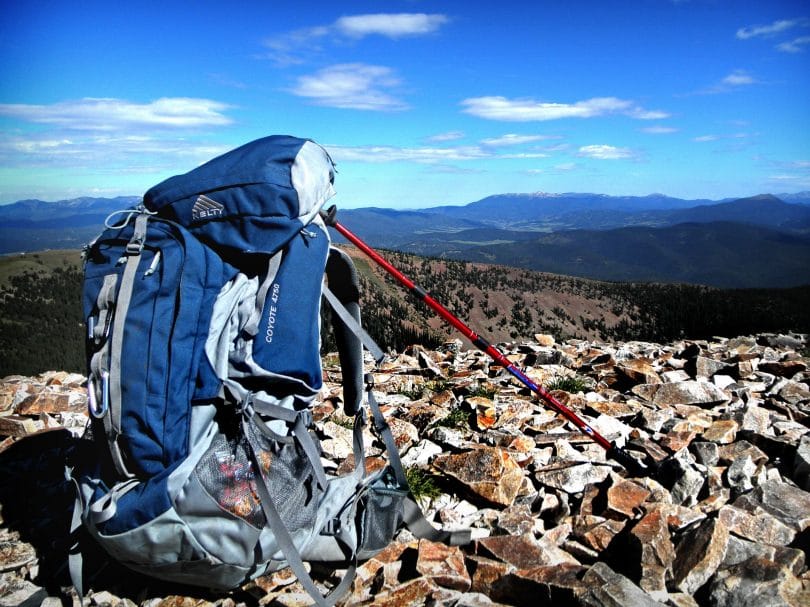
Types of Backpacks
The fact of the matter is that one size does not fit all. The choice of the backpack has a lot to do with how you are traveling. A hike along the Appalachian trail is one thing, but a hike into the Rocky Mountains is something else. The backpack you choose to use and how you pack it is critical depending on your use and other factors:
Traveling alone or in a group?
The lone backpacker has an extreme challenge. You have to carry everything you need for the duration of your excursion. Weight and space limiting are critical.
The time of year
Backpacking in summer is far different than backpacking in winter. Winter treks require more and heavier equipment, while summer lightens the load.
The duration
A one or two-night stand in the woods is a cinch if the weather is stable. A week or more is a challenge regardless of the time of year or weather due to the need to carry enough to endure the trip.
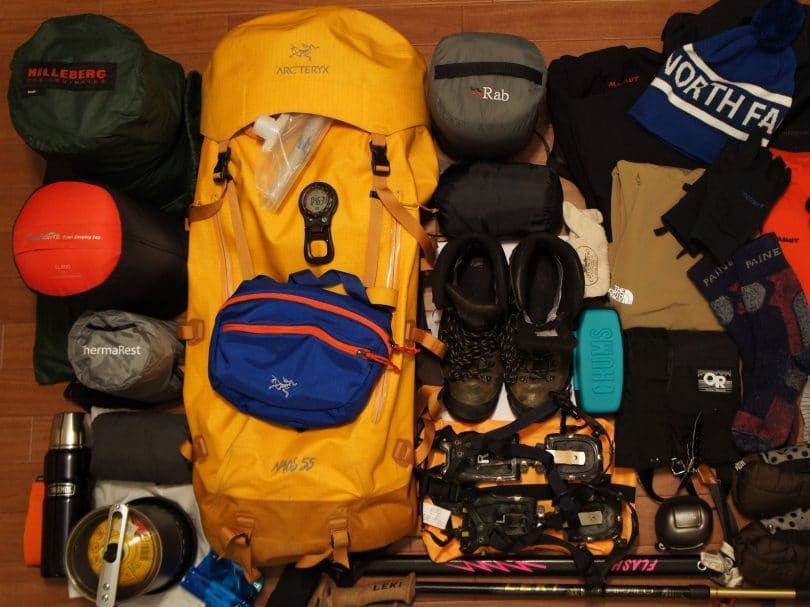
Best backpack styles for your trek
- Hiking. If you’re simply hiking along a trail the standard backpack with an external frame of aluminum or graphite will give you the support you need and compartments to carry your gear.
- Mountaineering. If you’re mountaineering, you need to consider a mountaineering backpack which typically has an internal frame to keep the pack closer to the back and body and multiple straps to stabilize the weight and avoid shifting on a slope or ridge.
- Day trips. If you’re only doing a day trip with one night in the woods any type will be fine unless it takes you 20 miles to get there. In that case, a backpack with an external frame that’s well-packed should suffice. See our tips on how to choose the top backpacks with external frame to help you.
- Base camp. Hunters and trappers usually establish a base camp for a week or two. This is typically a brutal, long-haul but it’s a one-dash marathon. They still try to pack wisely but they’ll often carry more than usual with frequent stops to just catch their breath before the destination.
Regardless of the destination or trek, any and every backpack needs to be adjusted and sized to the backpacker.
Adjusting backpack basics
Packing a backpack wisely is all about understanding the physics of our bodies and how we carry weight. Our legs are the strongest parts of our bodies and our backs are close behind. Our shoulders and arms are actually weaker with regards to the rest of our body.
The hip belt breakthrough
The hip belt that we see on many backpacks brilliantly shifts much of the weight of the backpack to our hips and legs. It also helps to keep a backpack from shifting on slopes or a slip on the trail.
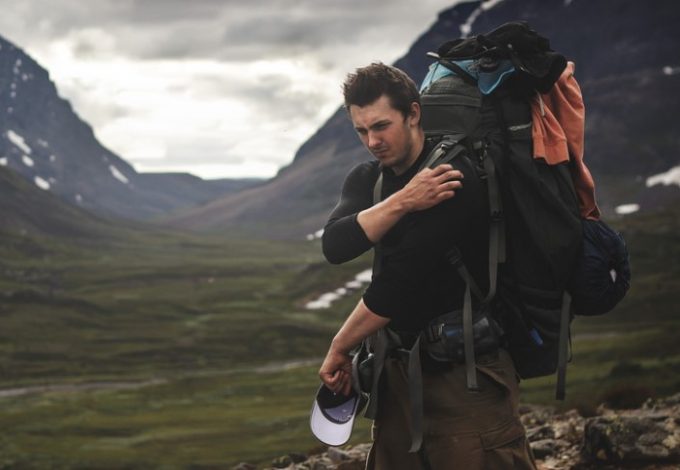
You should carefully adjust your hip belt to manage the weight of your pack to keep the weight of the backpack centered and balanced. But there’s a bit more to it…
Managing weight for the trek and the task
This is all about gravity. On a long, level hike it’s nice to have a little push and a backpack weight high towards the top of the backpack will push us forward.
[the_ad_group id=”22″]
Conversely, a backpack that has weight low on the backpack will pull us back. You don’t want to be pulled back while hiking. Most of us like being pushed forward.
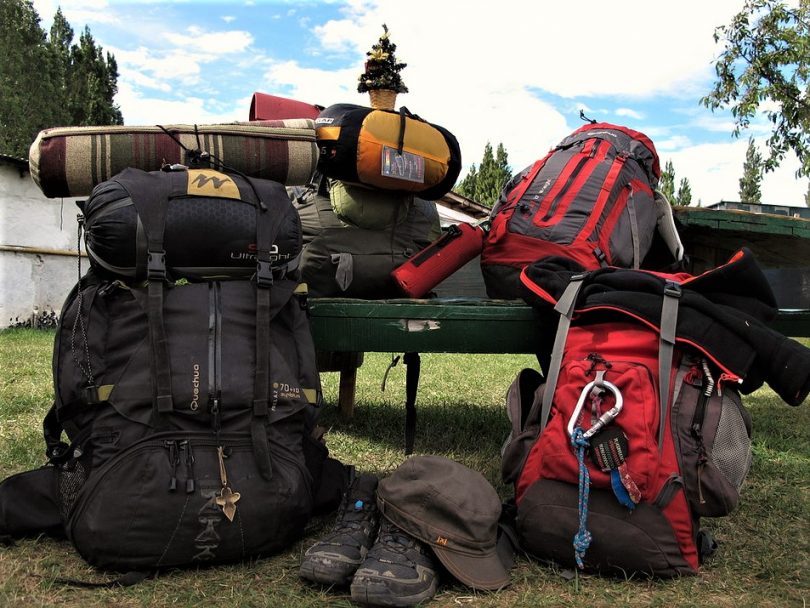
But sometimes we don’t want to be pushed or pulled
Mountaineers are totally focused on balance. The last thing they want is a backpack pulling them or pushing them. They want control and balance at all times. That’s why the heaviest items are usually centered and close to the back.
The long-haulers
These are the base campers. They’re headed to one spot where they’ll camp for a week or two. Hunters and trappers are the usual trekkers. Typically, it doesn’t matter how they load their gear. It’s all heavy and frequent breaks get them to their one-time destination for the duration.
All of which gets to a backpack packing strategy
This is a strategy that starts with tactics. Find your stuff and start to lay it on the floor. A pool table can work as well. You want to assemble all of the things you need to take with you and simply stand back and lot at all of it. Here’s what you may or may not typically see:
- Tent
- Sleeping bag
- Bed pad?
- Cook kit
- Canteen or water bottle
- Water purifying stuff
- Clothes
- First aid stuff
- Food
- Rain gear
- Flashlight
- Stove and fuel and stuff for a fire?
- Hygiene stuff
- Specialized equipment for mountaineering or winter
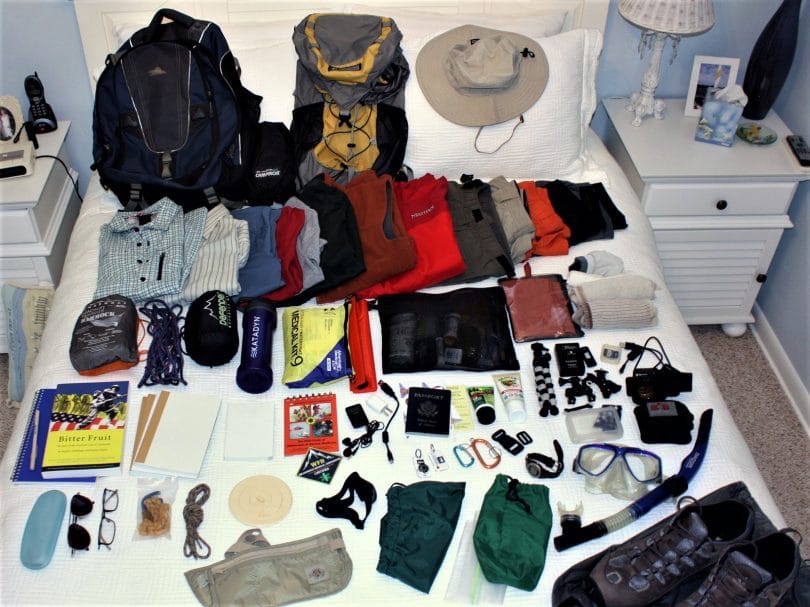
This list could vary but it’s fairly basic from a survival standpoint. Now all you have to do is figure out how much you need for how long you’ll be gone and where you’re going. And that gets to the tricky part.
Our tendency is to follow the old Boy Scout motto of “be prepared,” or the prepper motto of “Prepare for the worst and hope for the best.’ The problem is that it can lead us to overpack or over prepare and end up with a backpack that weighs more than we do. Here’s how to manage the first stage of packing a backpack:
Remember your travel plans
- Daily hiking of 5 to 10 miles?
- Mountaineering?
- Basecamp?
Look at the big picture
The benefit of laying out your gear is that are in a position to make some wise decisions about what you’re going to bring.
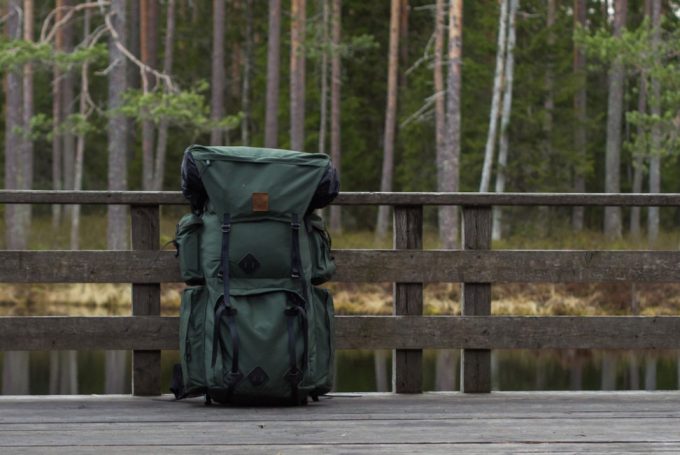
Here’s a checklist of considerations for your packing decisions:
Reduce
What can be eliminated and do you really need some items or the quantity of some items? Sunscreen is a good idea but if you’re doing a 2-day trek you don’t need the 16-ounce tube. Go with a one or two-ounce size. Dermatologists often give lip balms and sunscreen away in this size. Stock up.
Compartmentalize
There are stuff sacks that can hold a variety of items. Try to use these to consolidate related items in one compartment or stuff sack. Cooking equipment usually nests pots and pans together but you also want to try to keep the utensils, spices, tea bags or coffee and other related items in one stuff sack with the cooking gear.

The same is true for personal hygiene items like toilet paper, tampons, toothpaste, and toothbrush, etc. Keep these things together in one stuff sack so you don’t have to root around at the bottom of the backpack to find a specific item.
Prioritize
This starts to get to some of the critical packing considerations. Things like a sleeping bag or cooking equipment can find a place at the bottom of the pack where they’re a bit inaccessible but not really needed until you make camp.
Items you might need on the trail like raingear, a change of socks or trail snacks should be packed towards the top of the backpack or in external pockets on the back and side. These are the items you want to find easily and quickly. The same goes for a water bottle or first aid kit.
Weigh them
A standard equation is that your backpack should not exceed 25% of your body weight. However, this varies depending on a person’s size, strength, health, physical condition and age. Before you start packing you should try to get a general idea of the total weight of the gear you want to pack.
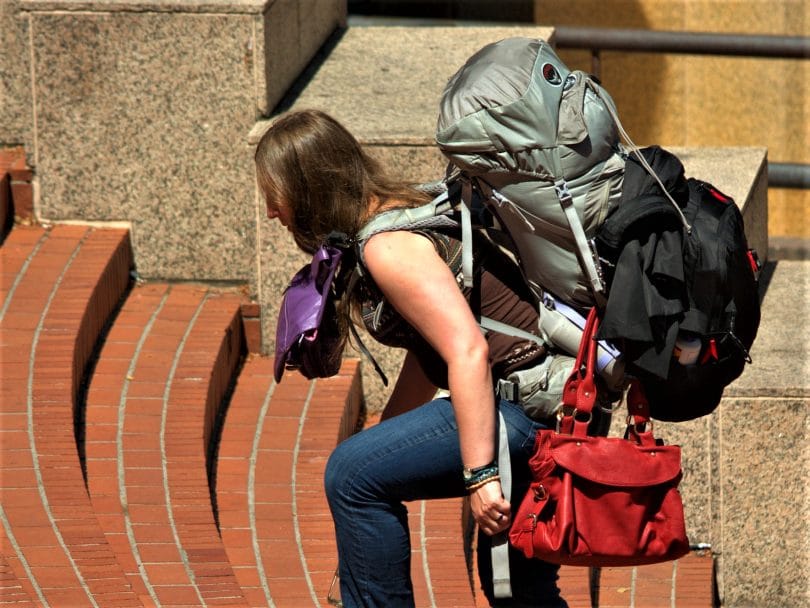
Standing on a bathroom scale and holding certain items will give you a list of weights once you’re subtracted your body weight from each load you’re holding. If you start to exceed 25% you might want to re-prioritize.
Fill the voids
Packing a backpack is not just about weight, but space. One way to take advantage of this is to fill any empty spaces and fill the voids. A nesting cook kit will often have an empty center pot in the kit. Use that empty space to hold cooking related items like seasonings, sugar, and any other small, cooking items.
You can also use the pinhole trick on prepackaged trail meals. Many come in foil packs but they often have some air inside. Poke a hole with a pin and squeeze out the air and then cover the hole with a small piece of tape. Check out our tips on how to backpack food for the trail for more information.
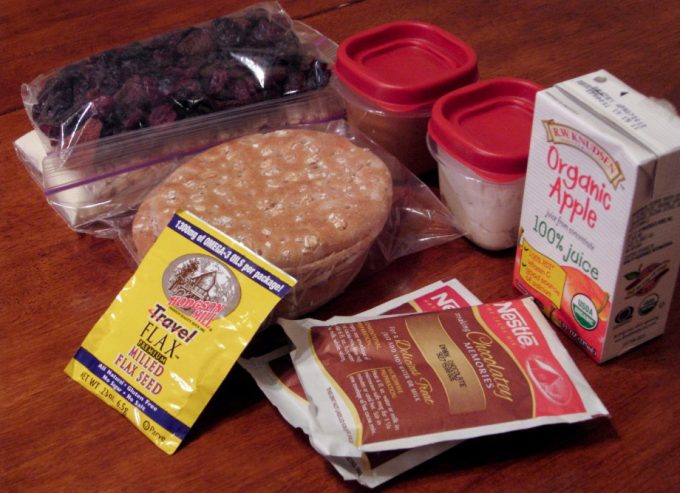
Another standard tip is to roll your clothes, don’t fold them. This will help you distribute clothing more easily in the backpack and should be done on the trail when you repack as you go.
Balance the weight
You want the weight of your backpack to be evenly balanced not only from top to bottom but from side to side. A good way to do this is to rest the center of the fully loaded backpack along its length on the thin side of a 2×4.
If one side continues to fall or lean you have to shift the weight until the backpack rests on the edge of the board without tilting one way or the other.
Test your concept
Even if you feel you have perfectly packed your backpack you should test your concept. Take some time to take a hike in a forest preserve while carrying the pack and see how you feel.
You should also climb a hill and walk a slope to understand how well you’ll manage on uneven terrain. And don’t forget to bend over or kneel down from time to time. You may have to do this on the trail and it’s nice to at least know how to manage those movements.
Share the burden
While some people backpack alone, quite often backpacking is a group endeavor. This means you need to think strategically about how the group should pack. While everyone will want their own personal items; clothing and hygiene the group only needs one first-aid kit.
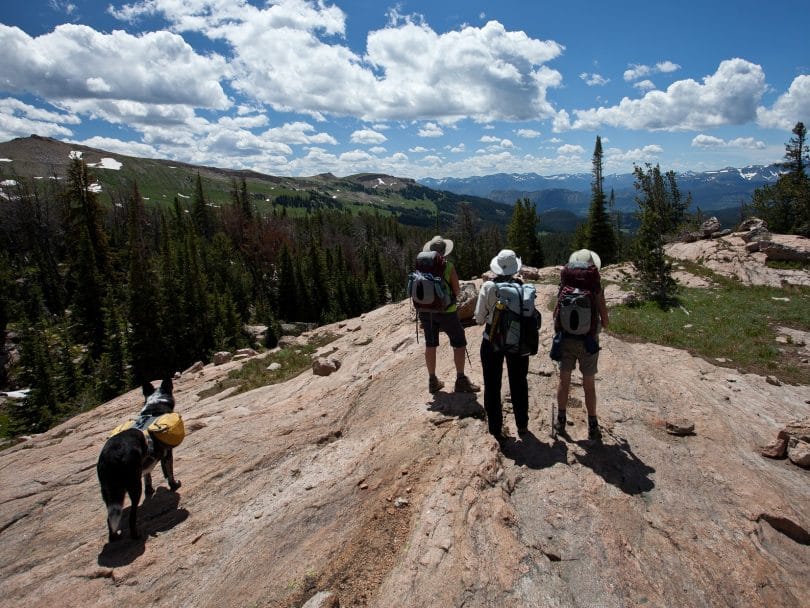
The same is true for the cook-kit and stove if you need one. It doesn’t make sense to carry redundant items in a group unless there’s a specific concern or need. In order to manage this strategy, you should consider the following:
Know everyone’s limits
If you have 4 people in your party and a 4-person tent than one person will have to carry the tent. The question is how heavy the tent may be and what other items must that person carry? If the total weight is too much for them some fair decisions should be made to help share the load the for the group.
Know everyone’s strengths
Think of this as “Aces in their places.” If a member of your group is a paramedic, nurse or doctor it makes sense for them to carry the first-aid gear so they know where it is, and can access it quickly.
Every group seems to have a camp chef who demonstrates a certain mastery on the trail. This person gets the cook-kit and some of the staple food items so they can set to work once camp is made.
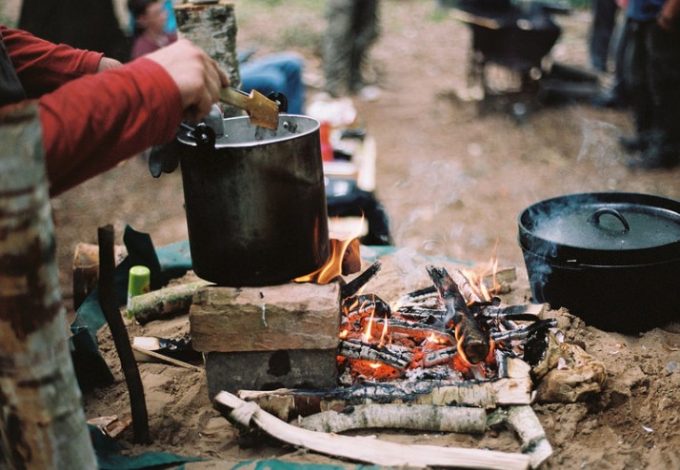
Some people are expert at orienteering and they should carry the maps, compass, barometer, binoculars or any gear related to finding the way on the trail.
If you have an expert woodsman in your group, they should carry the ax or hatchet, saw and any other gear for building a fire or improvising camp furnishings or other items.
Here again, it’s important to be fair and do an accurate assessment of how much each person in the group can carry for the duration of the trip.
The repacking challenge en route
This is a critical consideration when packing a backpack. It’s easy to take a luxurious amount of time and energy to perfectly pack a backpack in the comfort or your home. Maybe you have a fire in the fireplace and you’re kneeling on the carpet carefully packing and arranging and adjusting.
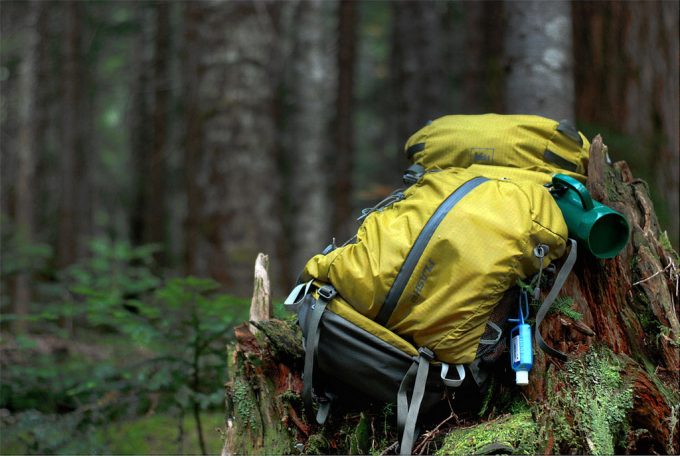
But it’s another story on the trail. Repacking on the cold, wet ground in a light drizzle and brisk wind can beat the best of us. What’s critical is that you take your time to repack.
[the_ad_group id=”23″]
If you start throwing items into the pack without consideration you may be in for a miserable day. Try to remember some of the basic principles we’ve covered here.
Pack it up!
Hopefully, some of these tips will help you enjoy a pleasurable and rewarding adventure. You can always redistribute things amongst your group if necessary, but if you get it right the first time you’ll find that a well-packed backpack can make a big difference throughout your trek.

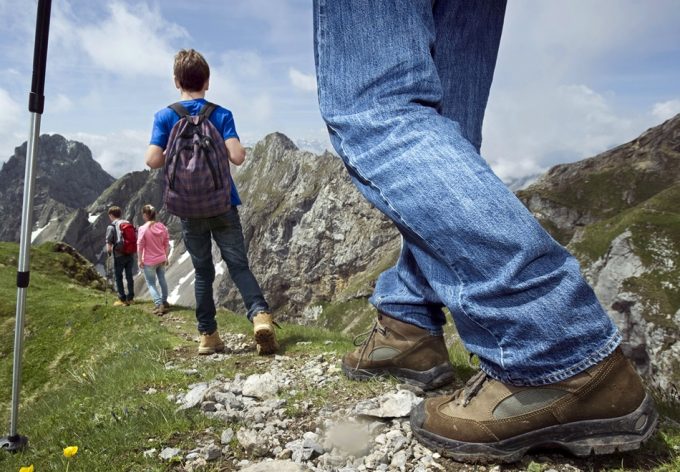
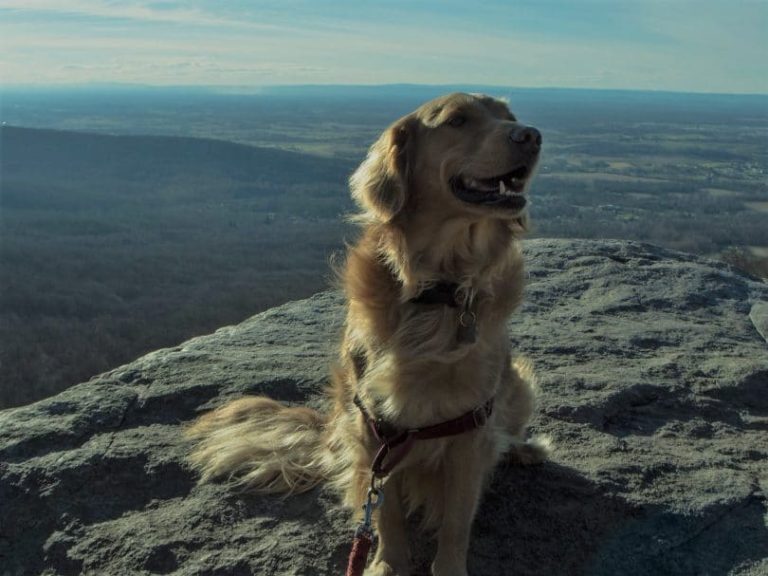
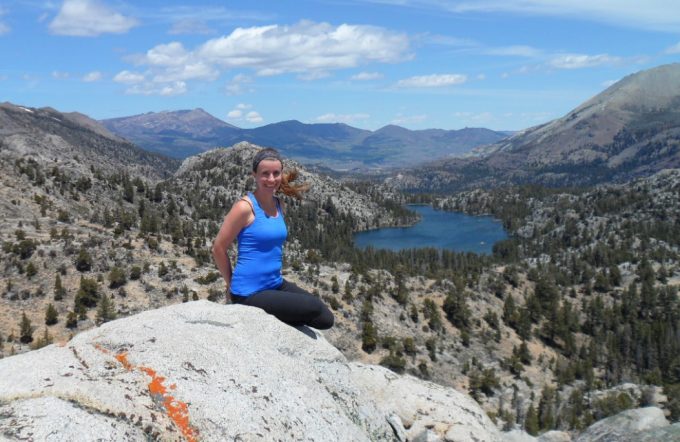
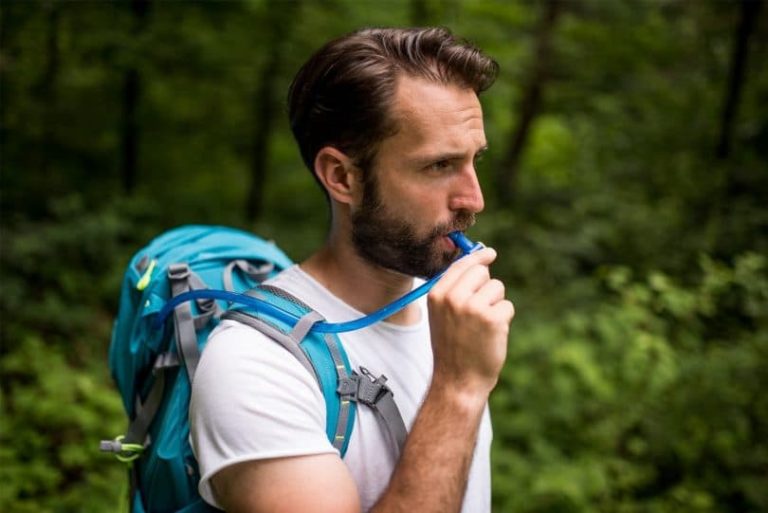
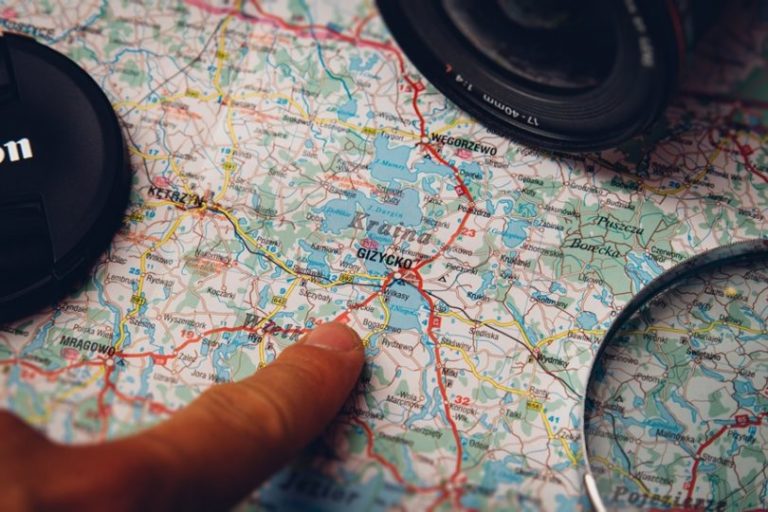
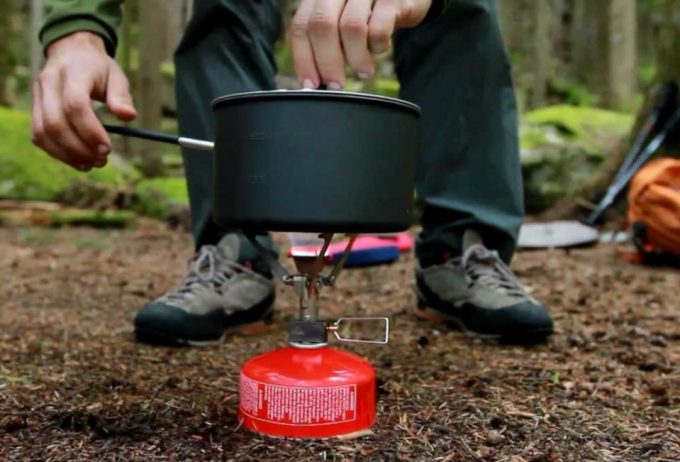
I always use this method of packing: at the bottom I put lightweight items, like shirts, in the middle and as close as possible to my body heavy items, like shoes, and on the top medium-weight items, like pants. I tried different combinations, but this one is the best for me.
More importantly, I always have a list of things I will need. I write it for 2 or 3 days so that I don’t forget to pack anything. For me, it’s the most important thing.
This sounds like a great strategy you got there, Harold! Preparing a comprehensive list definitely saves you from the hassle especially when you remember it right in the middle of the wilderness. Being prepared always pays off, and this is a good practice that every backpacker or camper should remember.
I always use this method of packing: at the bottom I put lightweight items, like shirts, in the middle and as close as possible to my body heavy items, like shoes, and on the top medium-weight items, like pants. I tried different combinations, but this one is the best for me.
More importantly, I always have a list of things I will need. I write it for 2 or 3 days so that I don’t forget to pack anything. For me, it’s the most important thing.
This sounds like a great strategy you got there, Harold! Preparing a comprehensive list definitely saves you from the hassle especially when you remember it right in the middle of the wilderness. Being prepared always pays off, and this is a good practice that every backpacker or camper should remember.
Nothing more needs to be said. However, there is one unusual option I can advise. If you really have no space in the backpack, you could consider leaving the toilet paper at home. It is light but it’s big in size. If you can find any proper alternatives, you can theoretically use leaves and grass. But then you’ll need an extra small shovel and a bar of soap.
I thought I am the only one who gives advice to ditch the toilet paper because of the space it takes whenever you go out on a camping adventure. Switching it with a tiny shovel and a soap still saves a considerable amount of space.
Nothing more needs to be said. However, there is one unusual option I can advise. If you really have no space in the backpack, you could consider leaving the toilet paper at home. It is light but it’s big in size. If you can find any proper alternatives, you can theoretically use leaves and grass. But then you’ll need an extra small shovel and a bar of soap.
I thought I am the only one who gives advice to ditch the toilet paper because of the space it takes whenever you go out on a camping adventure. Switching it with a tiny shovel and a soap still saves a considerable amount of space.